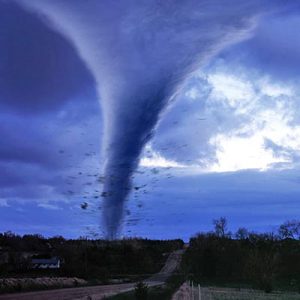 Let’s admit it: the crisis is no longer at our doorstep, it’s already making havoc inside the house. It’s not a question of falling or not falling from a “fiscal cliff”, it’s a question of having just further cliffs before you instead of straight road.
Let’s admit it: the crisis is no longer at our doorstep, it’s already making havoc inside the house. It’s not a question of falling or not falling from a “fiscal cliff”, it’s a question of having just further cliffs before you instead of straight road.
This may well mean that ALL MANAGERS IN THE NEXT FEW YEARS ARE GONNA BECOME CRISIS MANAGERS. It’s one thing trying to keep things working properly or make them work better, but it’s quite a different thing to do it when everything around is falling apart. Our classic perception of Tools of our trade as Managers, acquired in more peaceful days, may betray us when the real storm is upon us. What benefit could be expected from buying new hardware, updating software or getting an additional certificate? What skills should we be developing that will make stand above others and lead in the rime of crisis?
Happily for us, a relatively new field of Disaster Management has been developing quickly in the recent years in order to answer these issues, and as is obvious from its name – it specializes in solving crises. I think that it’s a good time for all of us to learn a few things about Disaster Management, and who knows – may be to learn FROM IT.
So what is Disaster Management?
Well, as you already guessed, it deal with disasters, but what is a disaster then?
Here is where the magic starts. You see, it doesn’t help you much just to know what things are – when disaster strikes, you have immediately to know WHAT TO DO. This approach starts with the definition of the focus of interest of the filed: disaster is not defined in general terms in the likes of “a catastrophic event of significant proportions”, because it doesn’t tell anything a kindergartener will not know. Instead, disaster is defined as “a significant and immediate gap between rising needs and available resources”. Such kind of definition momentarily advises you about what you should be doing – you are to shorten this gap as much as possible and as soon as possible either by increasing you resources (by preparing in advance, by getting more after the need has arisen, by better managing of the existing ones) or by reducing the needs (limited only by your imagination).
It doesn’t stop there.
After defining disaster as its focus of interest in a functional manner, Disaster Management proceeds to defining itself in regard to the timeframe of its application to a disaster. Disaster Management is defined as the tools and techniques for most effective management of needs and resources during the Preparedness (Pre-Event), the Response (during and immediately after Impact) and the Rehabilitation (after the Response and until the disappearance of resources/needs gap) phases.
You screen for possible risks and prepare for them in the first phase, rush to apply your resources in the most effective manner while acquiring more in the second phase, and target the weakened areas after a general reassessment in the last phase. Which, in its turn, transforms into Preparedness as new risks are identified.
There are also several important concepts that help Disaster Managers to manage needs and resources in regard to these phases.
As I said, Preparedness is all about getting more resources.
Intervention is the targeted application of the available resources.
Mitigation is an attempt to reduce future needs (for example, if the population has either stored drinking water or has the means to produce it in sufficient quantities – there is no need to prioritize bringing this resource to the disaster scene).
A state of desired level of Mitigation is called Resilience, i.e. community that knows to rescue, feed and protect its members is a resilient one.
There are many other important aspects to Disaster Management, but these are the most basic and important ones. Mastering them can take time, but in the end it may also give you the edge when facing a crisis.
In my next post on this topic, I’ll provide you with an example of how they improve their level of Disaster Management by fighting Biases.
Related articles:


